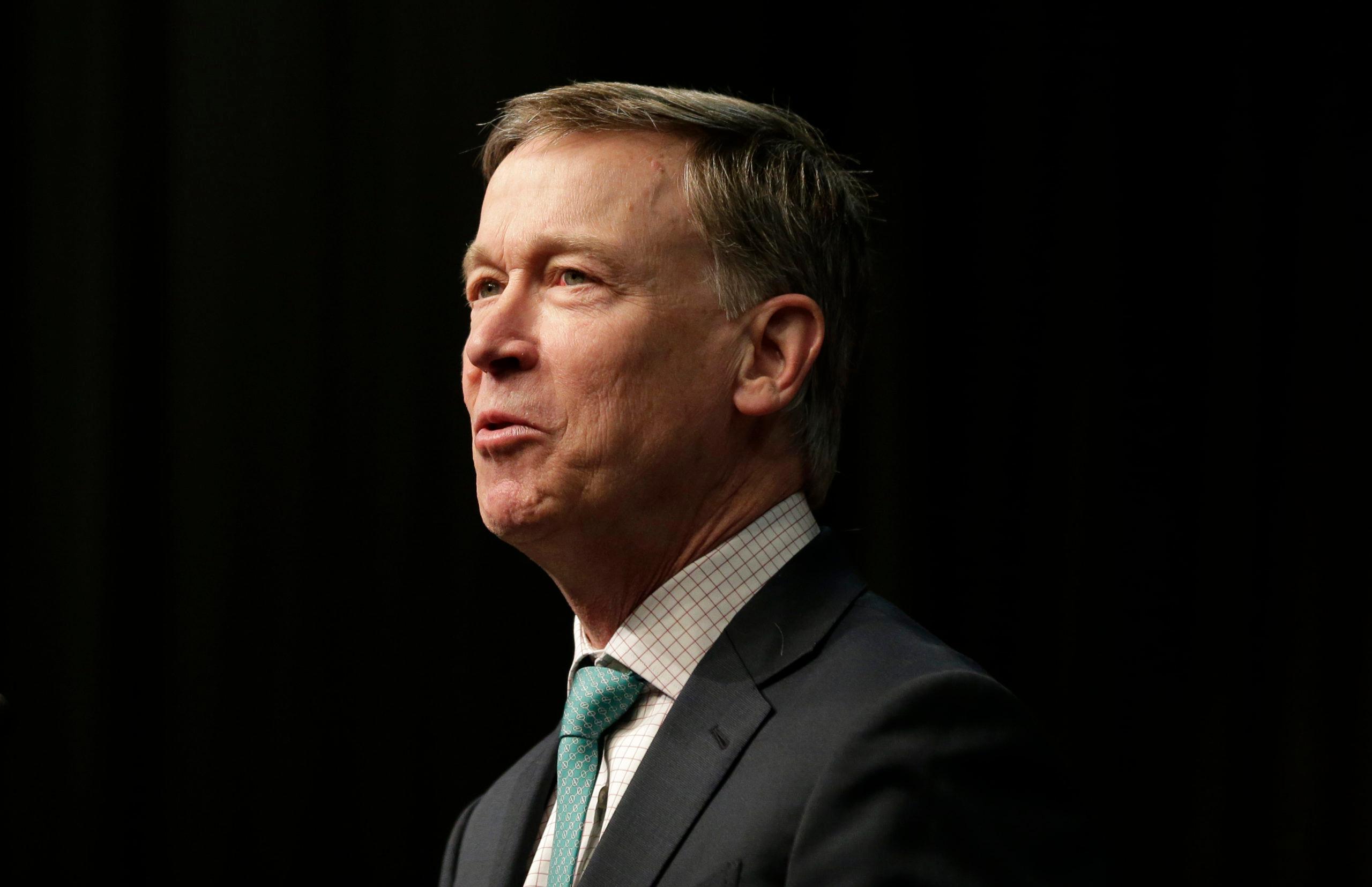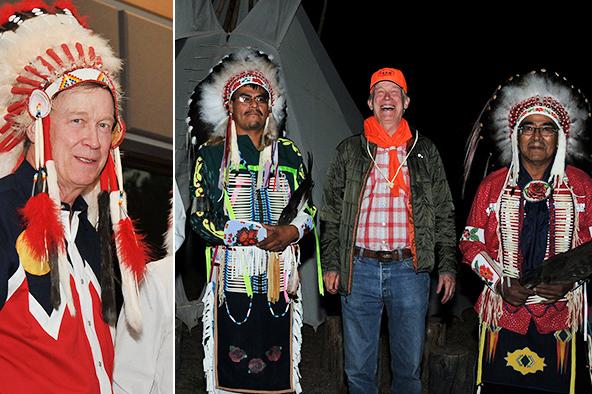
A day after winning a decisive victory in Colorado’s Democratic Senate primary race, John Hickenlooper responded to a letter from seven Indigenous women who are prominent in environmental advocacy and efforts to promote positive representations of Native American people.
They had demanded he exit the race for U.S. Senate.
Their appeal came two days before the June 30 primary election, in an open letter that called out Hickenlooper’s participation in an annual hunting competition in Wyoming, where he was photographed wearing a headdress and a scarf from the Eastern Shoshone tribe. The event is traditionally co-hosted by the governors of Colorado and Wyoming, and Hickenlooper participated multiple times, up until 2018. The hunting event is not open to women.
Some of the groups that signed onto the letter were vocal supporters of Hickenlooper’s primary opponent, Andrew Romanoff.
Kandi White, one of the letter’s authors, is with the Indigenous Environmental Network and said wearing a woman’s scarf on his head to denote he “lost” the hunting event, even though an Eastern Shoshone woman placed it on his head, was a “slap in the face.”
She teared up when talking to CPR News about it over the phone and said the image from 2012 made it look like Hickenlooper and the other men were “rubbing it in, of how they made something like this into a game.”
In an interview Wednesday with CPR’s Ryan Warner, Hickenlooper said the following: “That she would feel such anguish about it is certainly not good.” He added, “It's nothing that I would ever do again, recognizing that I would cause her that kind of anguish.”
Before the primary, Hickenlooper’s campaign had provided CPR a statement and people to speak on his behalf but did not make him available for an interview.
Rose Ann Abrahamson, a Shoshone-Bannock tribal citizen, did not sign onto the letter to Hickenlooper but responded to seeing the photographs. She called the event “demeaning” to Shoshone culture and took particular offense to the winners donning a war bonnet.
“It is a mockery. It is making fun of our most sacred items. It is sad to see people with great power make a mockery of our culture and it needs to stop.”
Hickenlooper said that the photograph showing him in a headdress, denoting his “victory” in the antelope hunt in 2018, was “a very complicated situation.”
“This was a longstanding traditional hunt,” Hickenlooper told CPR. “The headdress was placed on my head by the Hunt Chief, Chief Shoyo. Had I not allowed him to do that, he would have been offended.”

However, Arlen Shoyo, the elder who put it on his head, said in an interview Wednesday,
“That would be his choice … We wouldn’t push it. It’s not that he has to. It’s a person’s choice if he wants to wear it,” Shoyo said.
A spokeswoman for the Tribe said while some respected members are involved in the One Shot Antelope Hunt, the Tribe does not host the hunt nor provide any funding, though it does lend the war bonnet to Shoyo for use in the event.
Shoyo said the events around the hunt are not authentic Eastern Shoshone Tribal ceremonies and likened them more to a performance.
He said he and the other participants get compensated, though he added, “If I felt that it was a mockery of our tradition or whatever, I would certainly say something about it.”
Shoyo said the event is “all in good fun,” and he likes to meet new people and tell them about his culture. “We look at it as, you’re there, entertaining the people.”
With regard to future use of the headdress as part of the One Shot event, Shoyo said, “It's not a requirement that we put those on and maybe next year we say, ‘Okay, well, we wouldn't do that.' And it's our prerogative to if we want to do it or not.”
The women who signed the letter say it is cultural appropriation.
White said, “Of course the headdress bothers me. That's such disrespect and it's a sign of laughing at our traditions and our culture. In our times, you know, that was a big deal to be honored and awarded with a headdress. And it wasn't something that was to be turned into a game.”
Eleven Colorado governors have attended the One Shot Antelope Hunt dating back to 1941. Hickenlooper’s predecessor, Bill Ritter, told CPR he did not wear attire from the Eastern Shoshone Tribe. Hickenlooper and his supporters say as governor he strengthened relations between the state and Indigenous people, in part by being the first governor to apologize for the Sand Creek Massacre, and expanding the historic site to raise awareness of the massacre.
CPR’s Ryan Warner contributed to this report









